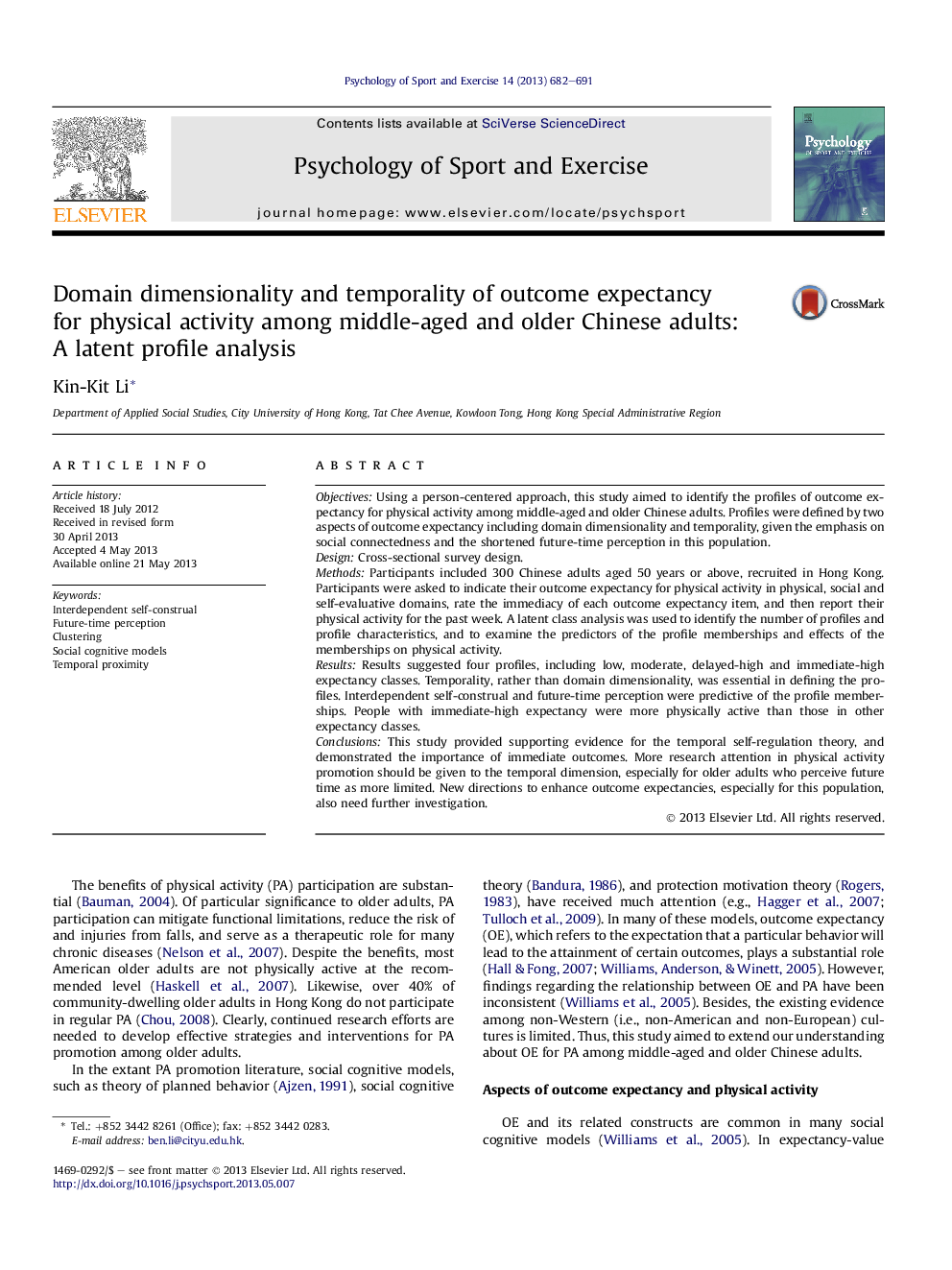| Article ID | Journal | Published Year | Pages | File Type |
|---|---|---|---|---|
| 894504 | Psychology of Sport and Exercise | 2013 | 10 Pages |
•Chinese Multidimensional Outcome Expectations for Exercise Scale was validated.•Physical outcomes were highly expected but not highly immediate.•Four profiles with different physical activity levels were identified.•Temporality, rather than domain-dimensionality, was essential in defining the profiles.•Profile memberships were predicted by future-time perception.
ObjectivesUsing a person-centered approach, this study aimed to identify the profiles of outcome expectancy for physical activity among middle-aged and older Chinese adults. Profiles were defined by two aspects of outcome expectancy including domain dimensionality and temporality, given the emphasis on social connectedness and the shortened future-time perception in this population.DesignCross-sectional survey design.MethodsParticipants included 300 Chinese adults aged 50 years or above, recruited in Hong Kong. Participants were asked to indicate their outcome expectancy for physical activity in physical, social and self-evaluative domains, rate the immediacy of each outcome expectancy item, and then report their physical activity for the past week. A latent class analysis was used to identify the number of profiles and profile characteristics, and to examine the predictors of the profile memberships and effects of the memberships on physical activity.ResultsResults suggested four profiles, including low, moderate, delayed-high and immediate-high expectancy classes. Temporality, rather than domain dimensionality, was essential in defining the profiles. Interdependent self-construal and future-time perception were predictive of the profile memberships. People with immediate-high expectancy were more physically active than those in other expectancy classes.ConclusionsThis study provided supporting evidence for the temporal self-regulation theory, and demonstrated the importance of immediate outcomes. More research attention in physical activity promotion should be given to the temporal dimension, especially for older adults who perceive future time as more limited. New directions to enhance outcome expectancies, especially for this population, also need further investigation.
